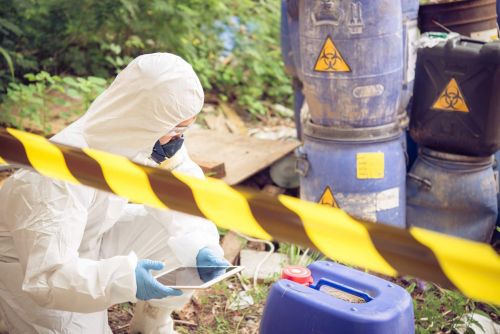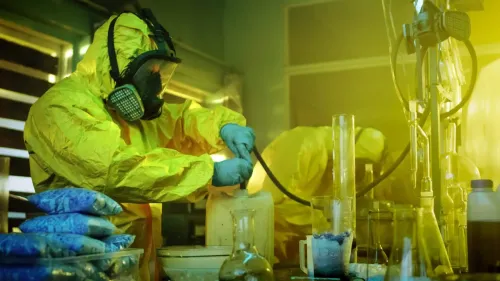How Old Does a House Have To Be To Worry About Asbestos?

Asbestos is a common concern for homeowners, especially those living in or considering purchasing older properties. A naturally occurring mineral known for its fire-resistant properties, asbestos was widely used in residential construction for much of the 20th century. However, its health risks — primarily related to lung cancer, asbestosis, and mesothelioma — became apparent over time, leading to strict regulations and, eventually, the banning of many asbestos-containing materials.
One of the most common questions homeowners ask is, “How old does a house have to be to worry about asbestos?” The short answer is that all homes, regardless of age, need to be tested for asbestos before any remodeling or renovation project, though some are at more risk than others. Here, we will explore the history of asbestos use in homes, how to determine whether your house contains asbestos, and what steps you should take if you find asbestos in your home.
The History of Asbestos in Residential Construction
Asbestos was extensively used in home construction materials from the early 1900s until the late 1970s. Its primary appeal was its fire-resistant properties, but it also offered durability, insulation, and affordability, making it a popular choice in a variety of building materials. Some common uses of asbestos in homes included:
- Insulation: Because it can withstand heat, asbestos was used in pipe insulation, attic insulation, and wall insulation.
- Flooring: Vinyl floor tiles, adhesives, and linoleum often contain asbestos to increase durability.
- Roofing and Siding: Roofing shingles, siding, and cement products may contain asbestos owing to its fire-resistant properties.
- Textured Paints and Ceiling Tiles: Asbestos was used in textured coatings, such as popcorn ceilings, and in ceiling tiles.
- Fireproofing: Because of its fire resistance, asbestos was commonly used in products designed to prevent or slow the spread of fires.
The health risks associated with asbestos became more widely recognized in the 1960s and 1970s. By the late 1970s, the U.S. government began phasing out the use of asbestos in most construction materials, and by the early 2000s, many asbestos products were banned.
Homes Built Before the 1980s: The Highest Risk Group
If your home was built before 1980, it is highly likely that asbestos-containing materials were used during its construction. In homes built between 1900 and 1980, asbestos was prevalent in insulation, flooring, roofing, and other building materials. The highest risk comes from homes built between the 1940s and the late 1970s, when asbestos use in residential construction was at its peak.
For homes built before the 1980s, it’s important to remember that asbestos is not harmful if it is undisturbed and in good condition. The primary danger occurs when asbestos-containing materials are damaged or disturbed — during renovations, for example — causing asbestos fibers to become airborne and inhaled.
Homes Built Between 1980 and 1990: A Gray Area
While asbestos use was dramatically reduced by the 1980s, some building materials containing asbestos were still being used in the early part of the decade. This is due to leftover stockpiles of asbestos-containing products that were still legally available for use in construction projects. If your home was built between 1980 and 1990, it’s still a good idea to have the house inspected for asbestos before conducting any renovations or repairs, particularly if you suspect materials such as insulation, flooring, or roofing contain asbestos.
Homes Built After 1990: Low Risk
Homes built after 1990 are less likely to contain asbestos, as regulations had effectively phased out its use in most residential building materials by this time. However, the risk is not entirely eliminated, as some materials — particularly those manufactured overseas — may have contained small amounts of asbestos. In general, homes built after 1990 are considered to have a much lower risk of asbestos contamination, though it’s always wise to remain cautious if any materials appear to be damaged or deteriorating.
How to Determine if Your Home Has Asbestos
If you own or are planning to purchase a home built before the 1990s, it’s a good idea to determine whether asbestos is present. However, asbestos cannot be identified just by looking at a material. Professional testing and laboratory analysis are required to confirm its presence.
Here are the steps you should take:
- Hire a Professional Asbestos Inspector: Contact a licensed asbestos inspector to conduct a thorough inspection of your home. They will take samples of suspected materials and send them to a laboratory for analysis. The areas most likely to contain asbestos include insulation, flooring, roofing materials, and popcorn ceilings.
- Avoid DIY Testing: Never attempt to take asbestos samples yourself, as disturbing asbestos-containing materials can release dangerous fibers into the air. Leave the sampling and testing to trained professionals who have the proper equipment and safety protocols.
- Get an Inspection Before Renovating: If you’re planning to remodel a home of any age, have an asbestos inspection conducted beforehand. Renovations can disturb asbestos materials, releasing fibers into the air and putting you and your family at risk.
What to Do If Your Home Contains Asbestos
If asbestos is found in your home, it doesn’t necessarily mean you have to remove it immediately. In fact, if the asbestos-containing material is in good condition and not disturbed, it may pose little risk. However, if the material is damaged or you’re planning renovations, asbestos abatement (removal or encapsulation) should be considered.
- Leave Undisturbed Asbestos Alone: If the asbestos-containing material is intact, it’s often best to leave it undisturbed. This includes materials like pipe insulation, floor tiles, or undamaged roofing shingles. However, regular monitoring for signs of wear or damage is important.
- Hire a Professional for Asbestos Removal: If the asbestos-containing materials are damaged or will be disturbed during renovations, contact a professional asbestos abatement company. These specialists have the tools, knowledge, and certification to safely remove or encapsulate asbestos while minimizing the risk of fiber release.
- Encapsulation as an Alternative: In some cases, asbestos can be encapsulated rather than removed. This involves sealing the asbestos material with a protective coating to prevent fibers from becoming airborne. Encapsulation is less invasive and may be a safer, more cost-effective option for certain situations. However, this should not be done on your own. This method is for licensed asbestos professionals only but may still be a cheaper alternative to full abatement.
Should You Worry About Asbestos?
If your home was built before the 1990s, it’s important to be aware of the potential presence of asbestos. While asbestos is not harmful if left undisturbed, any renovation, repair, or damage can release asbestos fibers into the air, posing a serious health risk. If you’re planning a renovation or repair project, the age of your home no longer determines whether asbestos testing is necessary — all homes must be tested under current guidelines. While older homes are at higher risk, even newer properties may contain asbestos in unexpected areas. Taking proactive steps to identify and manage asbestos will protect your family’s health and ensure compliance with safety regulations.
At Asbestos Professionals LLC, we offer certified asbestos removal and encapsulation services to keep your home safe. Contact us today at (303) 337-4839 or visit our website to schedule a consultation and ensure your property is free from harmful asbestos exposure.















